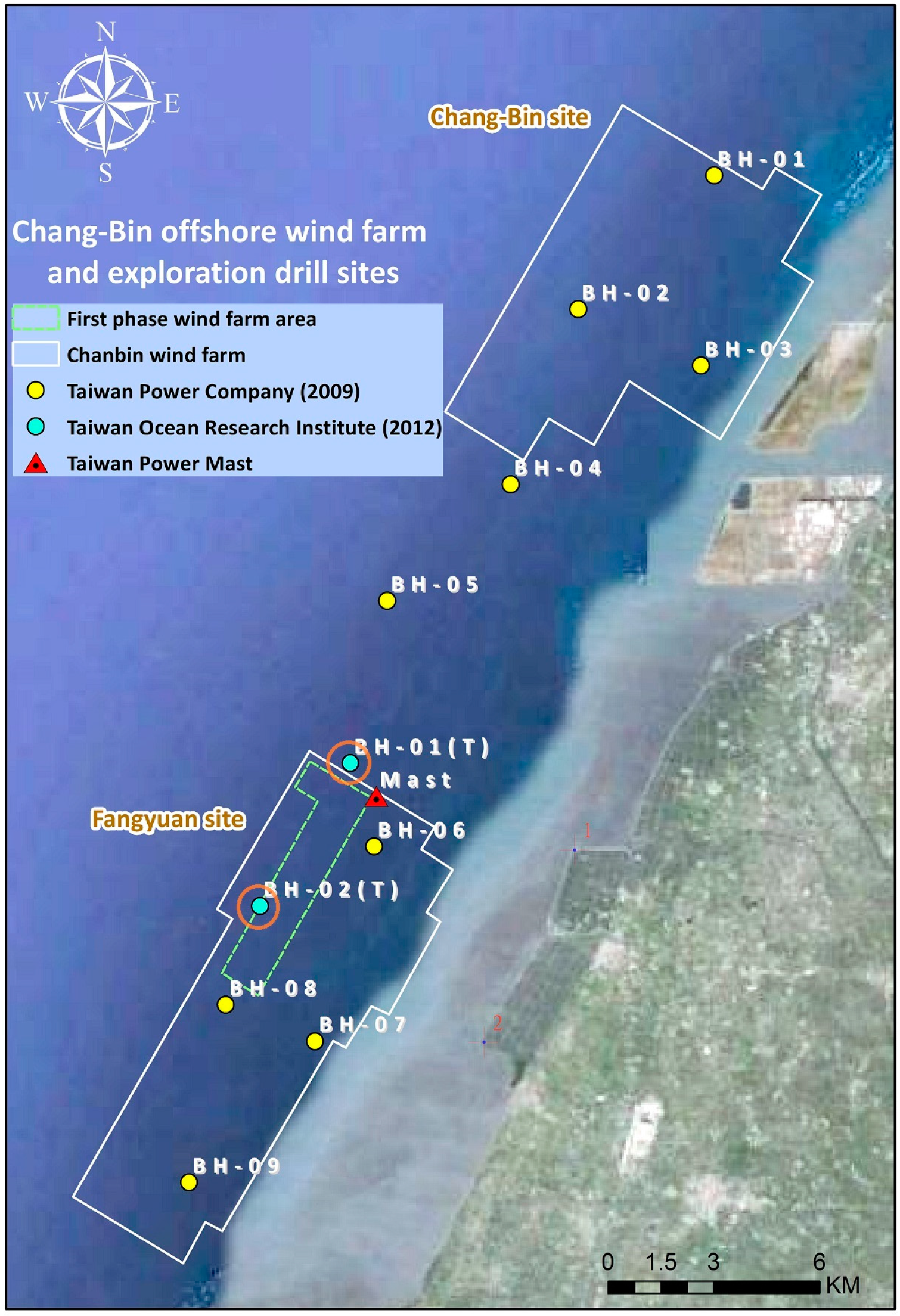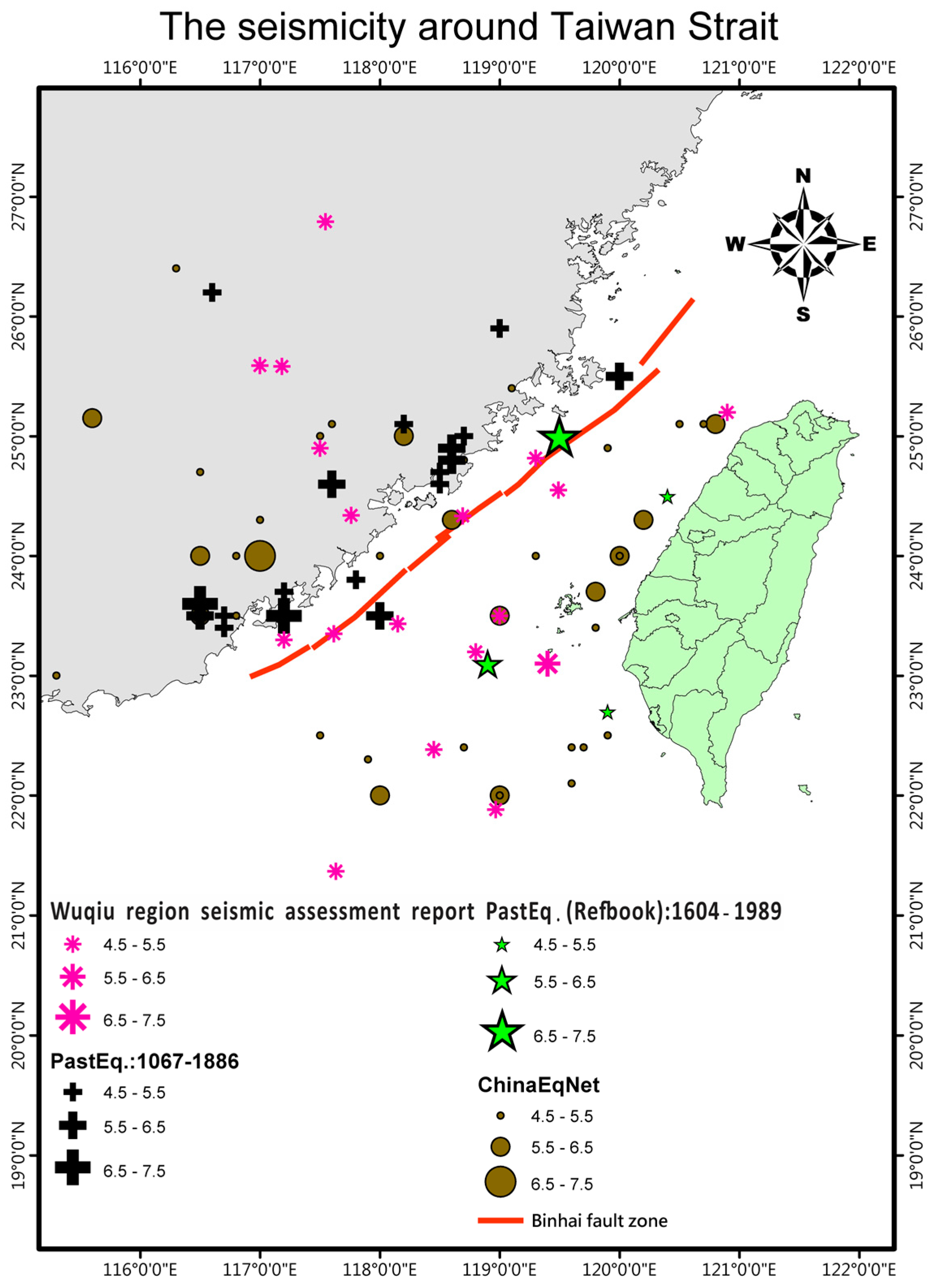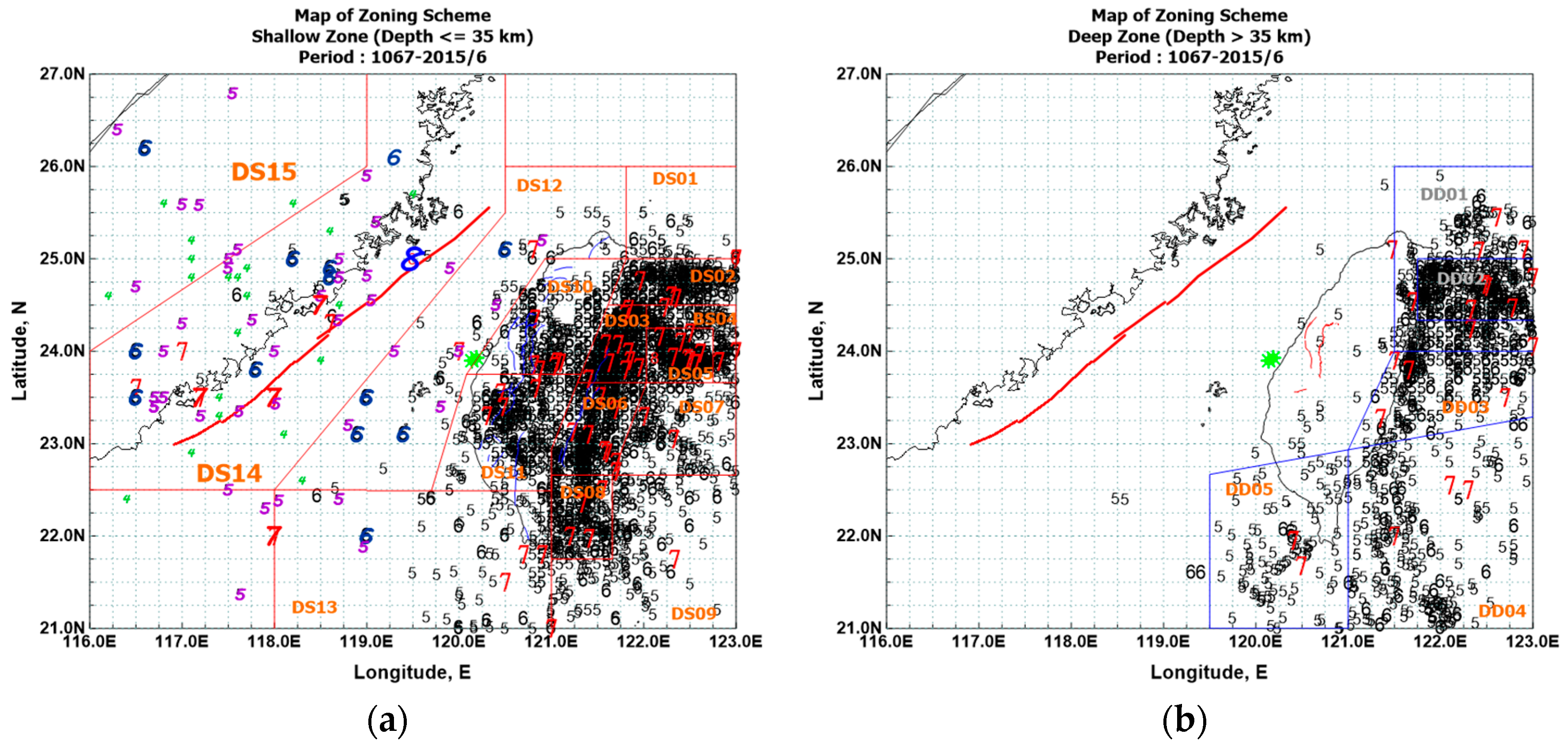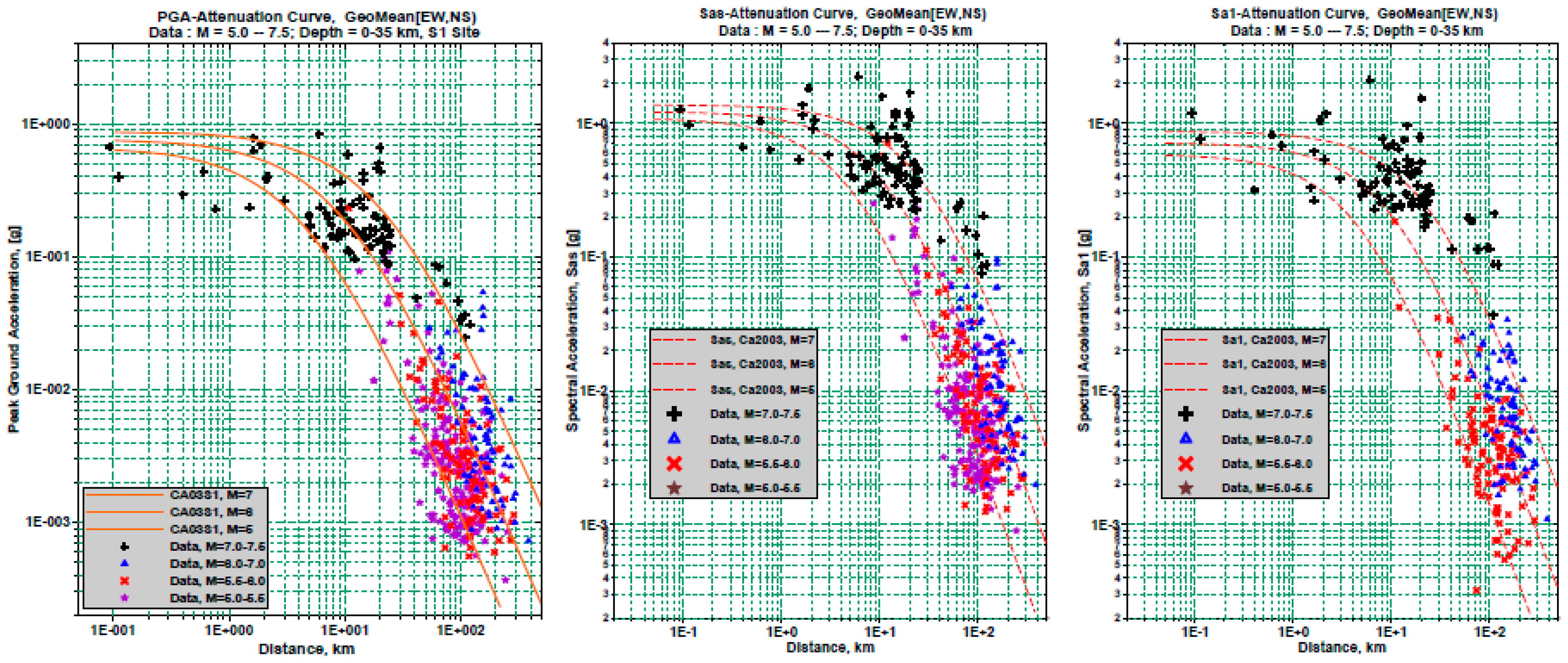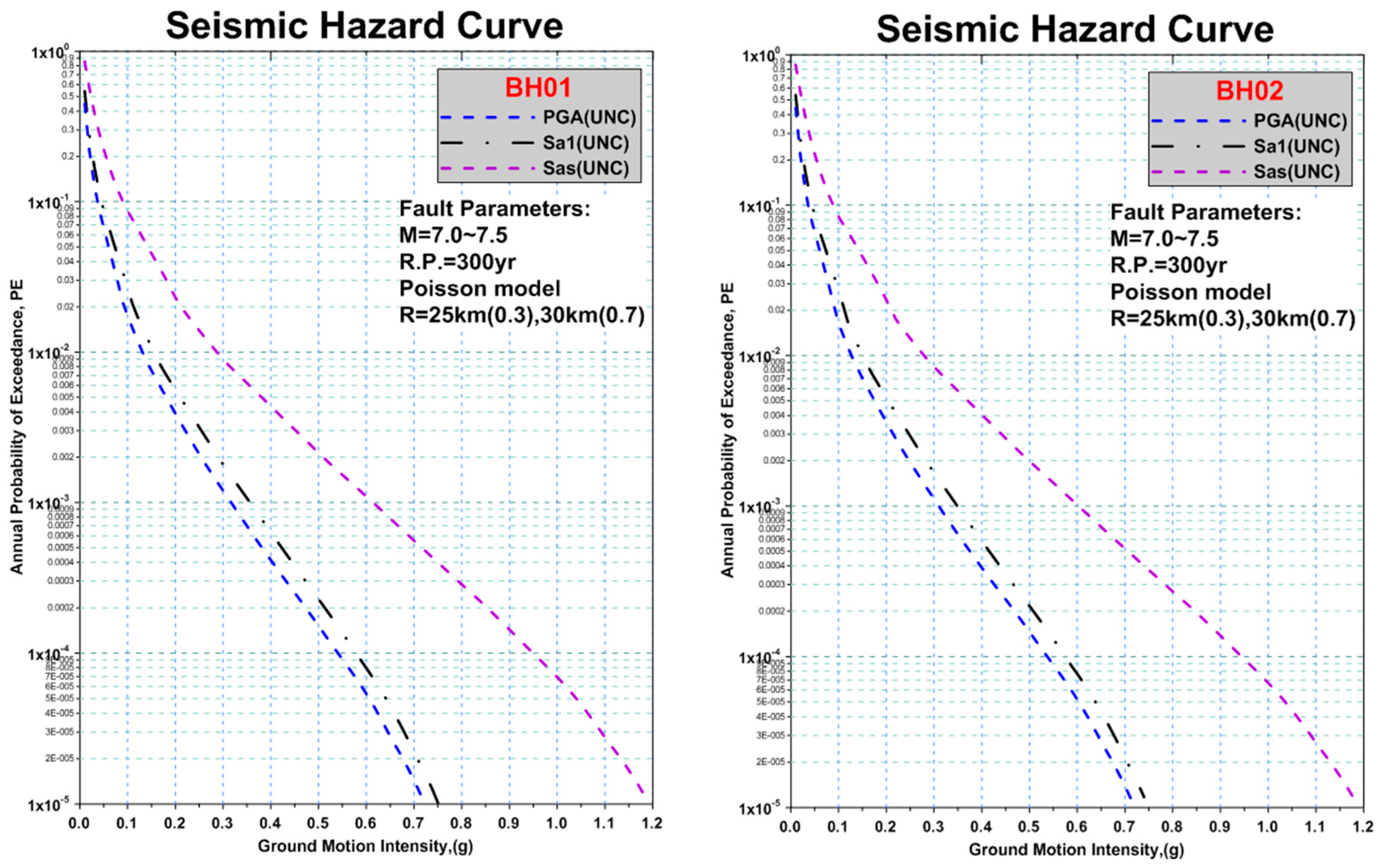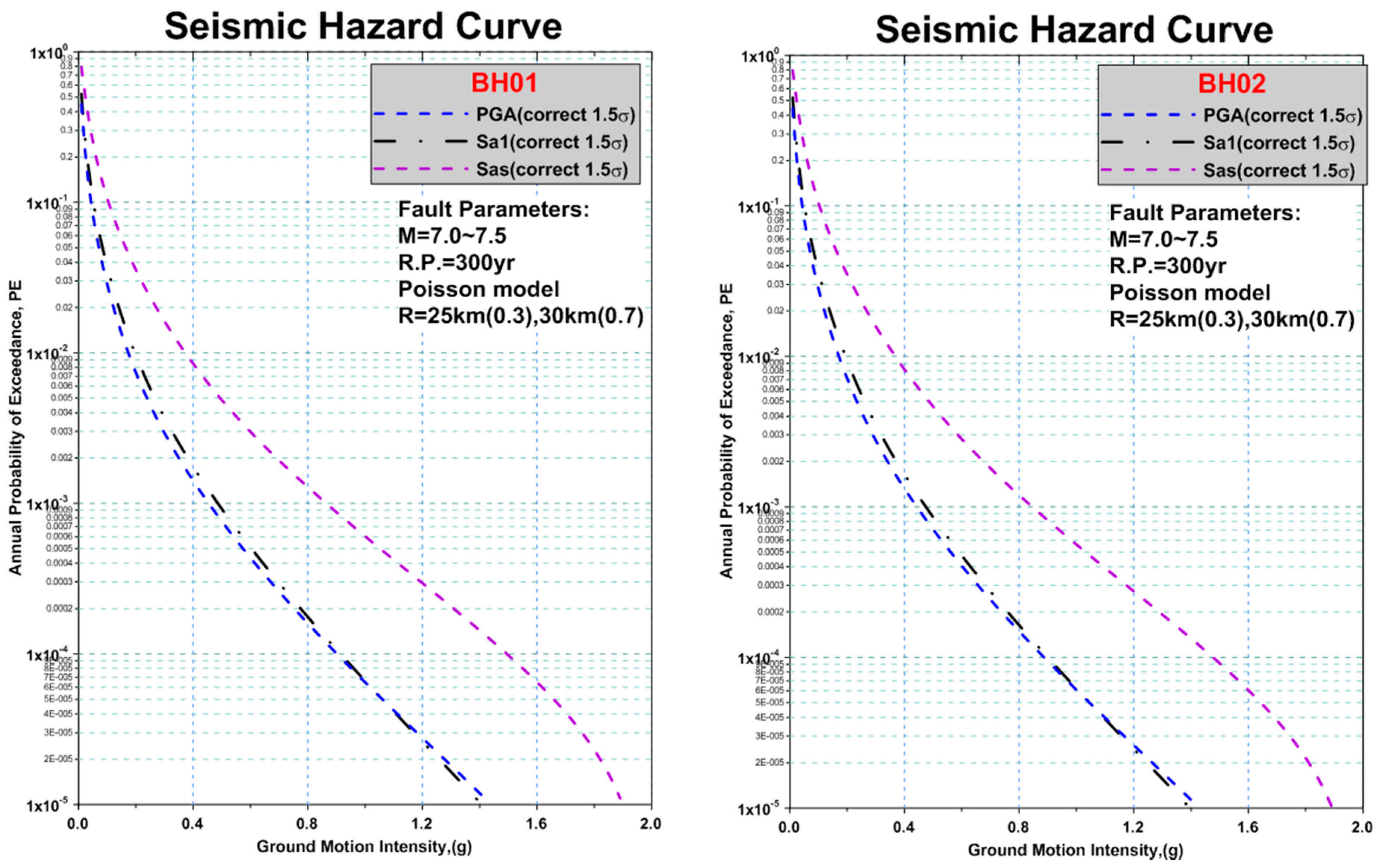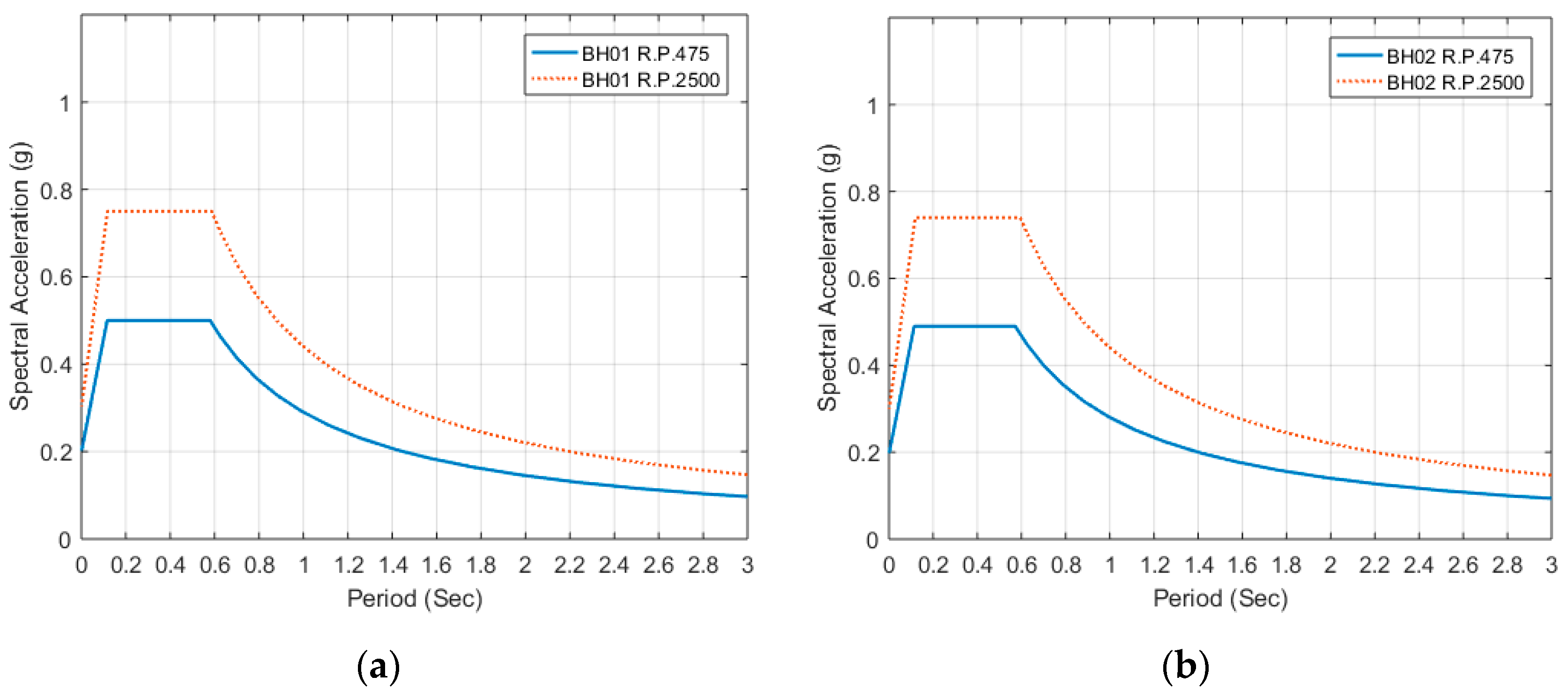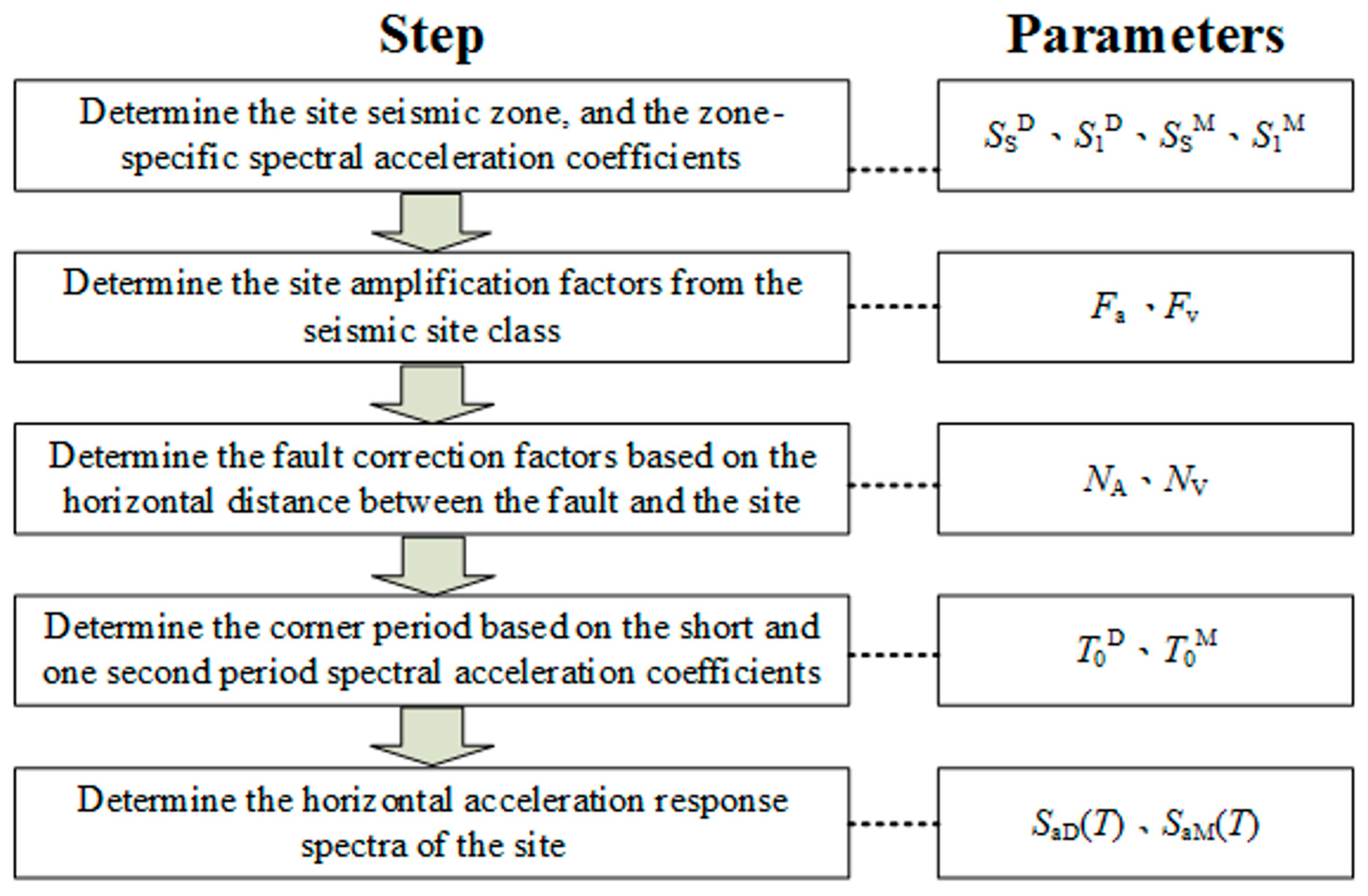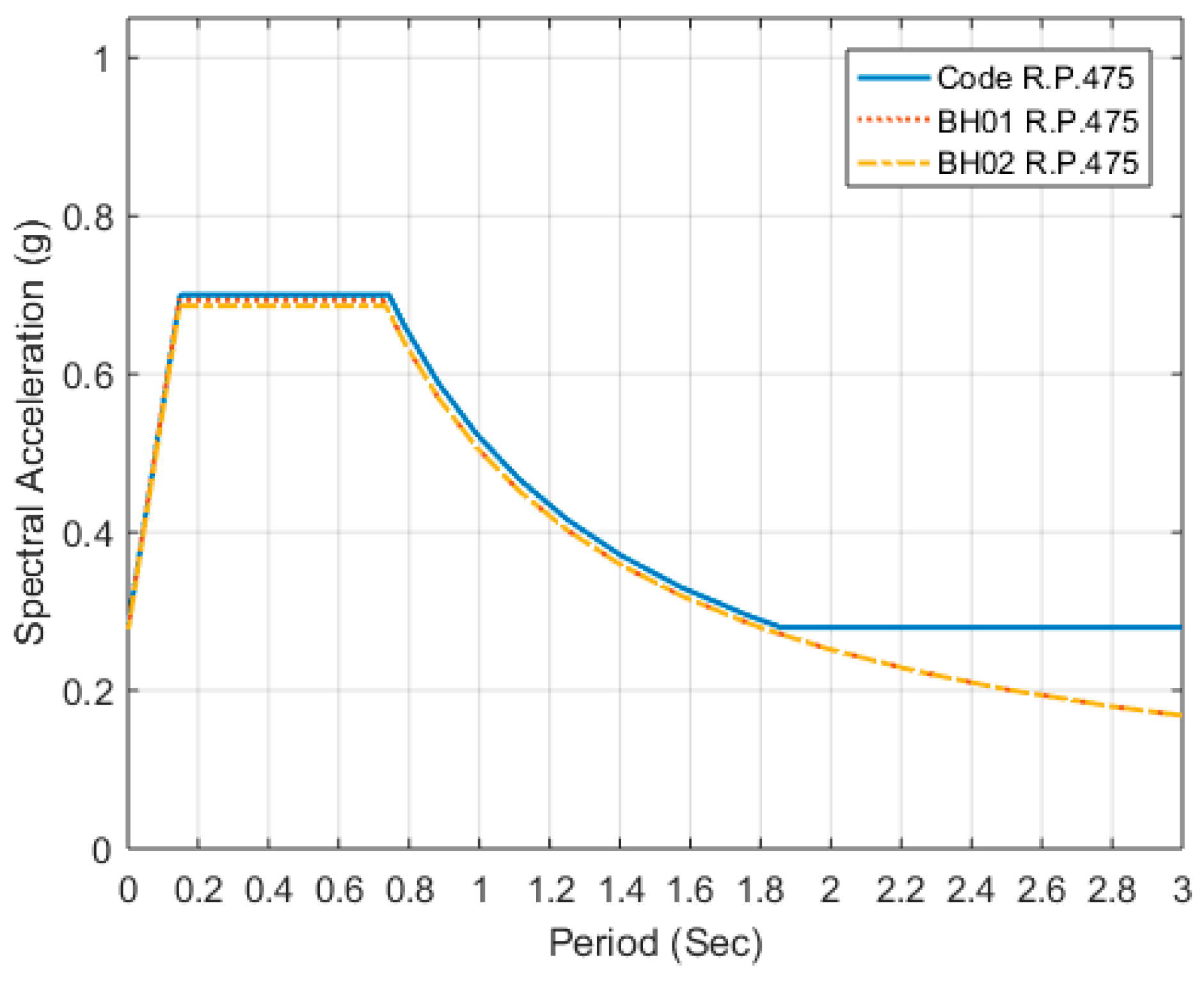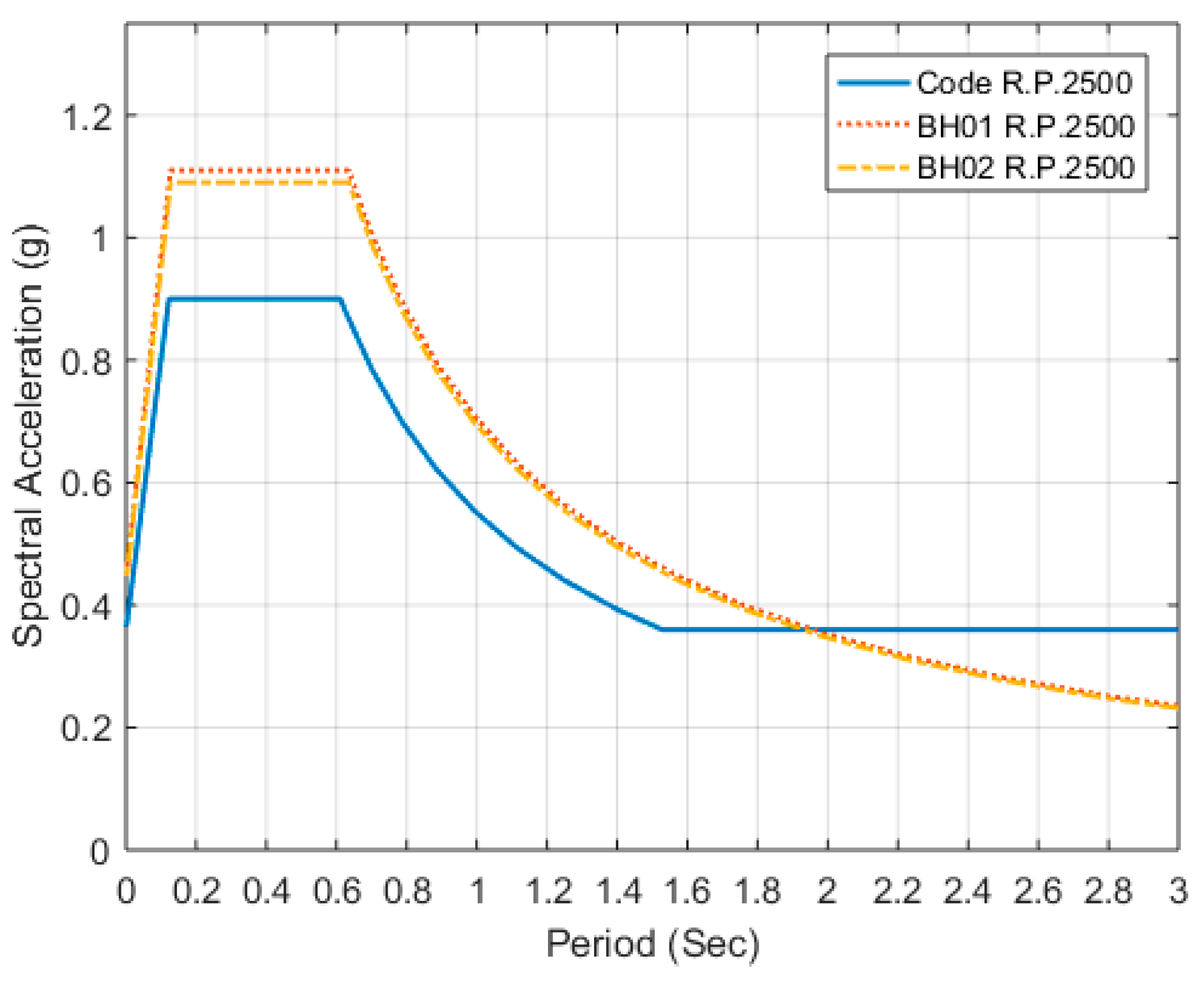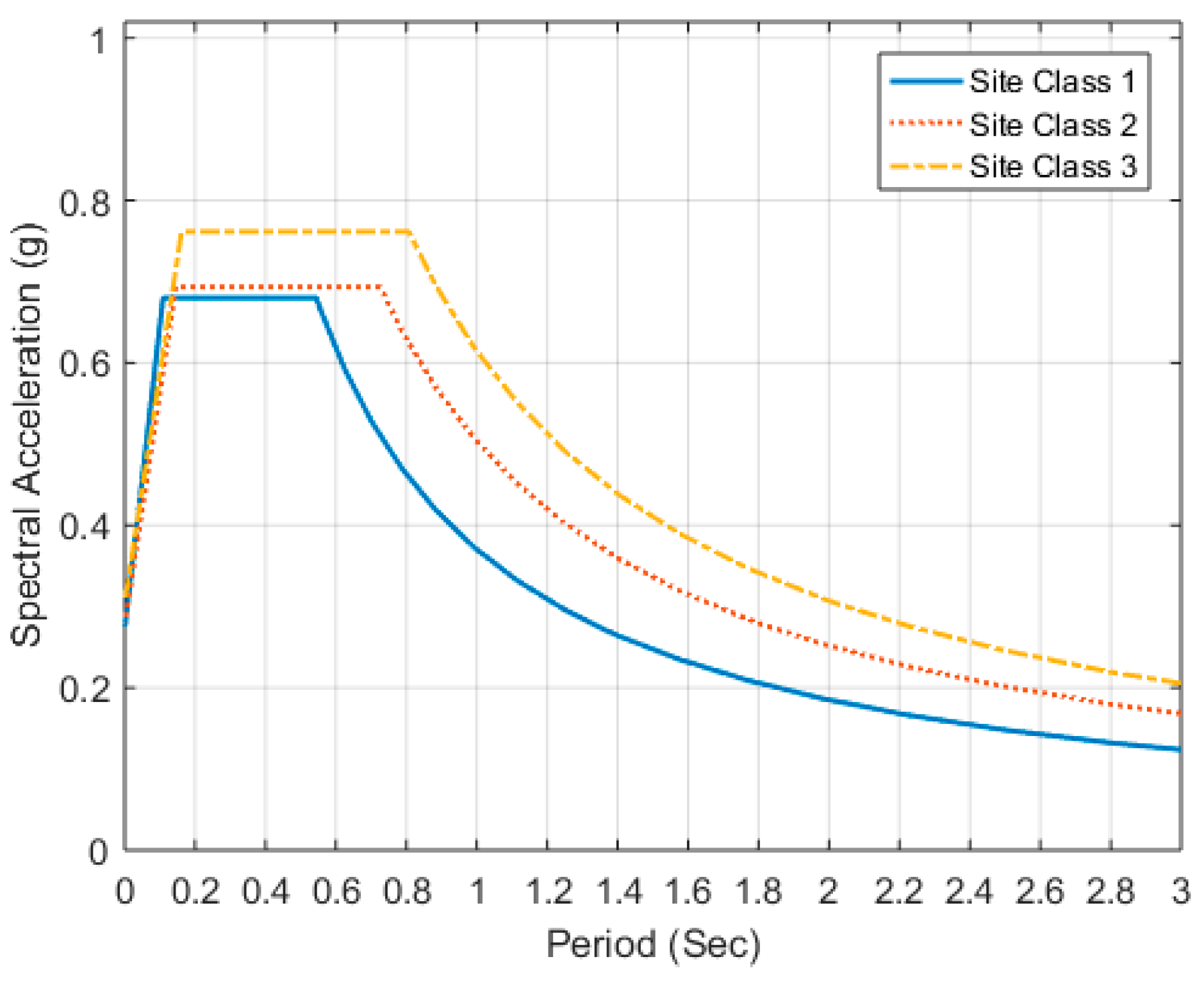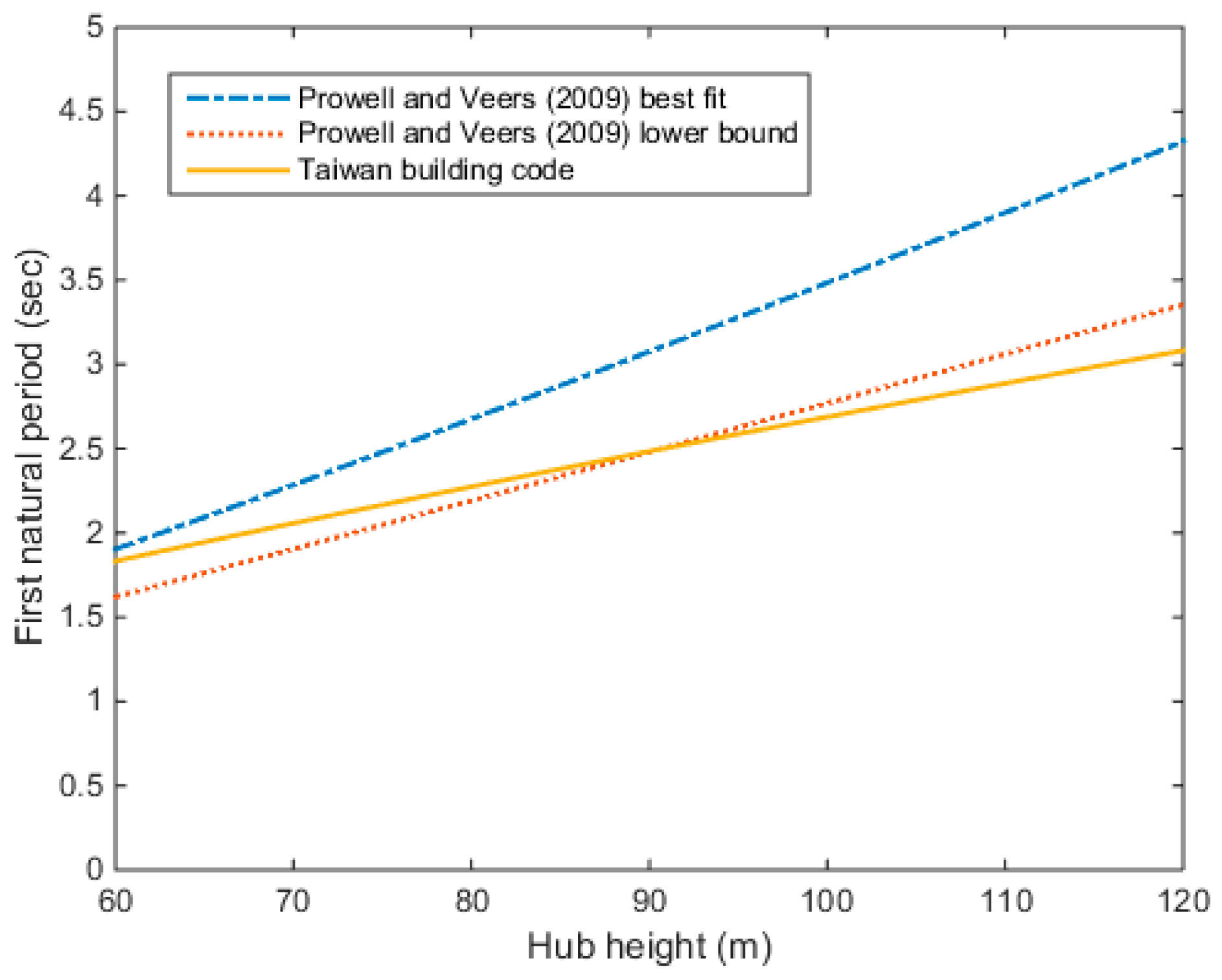The seismic hazard analysis of the Chang-Bin offshore wind farm at the exploration drill sites BH01 (TORI) and BH02 (TORI) is carried out in this study. The Universal Transverse Mercator coordinates of these two sites are E175290.1, N2656259.6 (BH01 (TORI)), and E172724.6, N2652211.9 (BH02 (TORI)). The objective of the seismic hazard analysis is to establish the annual probability of exceedance curves for ground motion parameters specific to the worksite such as peak ground acceleration (PGA), peak ground velocity (PGV), maximum ground displacement, spectral acceleration (Sa), spectral velocity, spectral displacement, etc. The probabilities of exceedance curves are generally referred to as hazard curves. After obtaining the spectral acceleration hazard curves for structures with different natural vibration periods, it is possible to obtain the uniform hazard response spectra for a specific annual probability of exceedance (earthquake return period) to be used in the design of foundations and supporting structures for wind turbines.
3.1. Seismic Activities in the Taiwan Strait
The geological structure of Taiwan is primarily a result of the interaction of the Eurasian Plate and the Philippine Sea Plate. Seismic data indicate that the Philippine Sea Plate begins a northward subduction beneath the Eurasian Plate near Hualien, Taiwan at approximately 24° north latitude. The inclination of the subduction is 45° to 50°. Its western boundary is roughly parallel to 121.5° east longitude. Therefore, primarily deep earthquakes occur in the northeastern part of Taiwan, i.e., east of 121.5° E and north of 24° N. Another subduction zone with deep earthquakes is located in southern Taiwan where the Eurasian Plate disappears beneath the Philippine Sea Plate at 121° E longitude. Seismic activities in the Taiwan Strait were also considered in this study to accurately calculate the seismic design specifications for the Chang-Bin offshore wind farm. The spatial distribution of earthquake activities in the Taiwan Strait reviewed by Wen et al. [
17] was considered. The data reveals a region of relatively concentrated seismic activities to the west of Taiwan Island. The region is wider in the east and narrower in the west and most earthquake activities in this region are influenced by the nearby Binhai fault zone, which is a NEE-trending tectonic belt. It is a recently active fault to control the differential sedimentation of Cenozoic stratum and forms a tectonic boundary to the west of Taiwan Strait.
Because Taiwan’s earthquake observation network is spread out evenly over the main island of Taiwan, earthquakes that occur in the Taiwan Strait are technically outside this network. There is a rather high uncertainty when calculating the locations of these earthquakes, and their historical records may also be incomplete. To build the database of earthquake in the Taiwan Strait, the historical earthquake information from the following sources are collected and compiled in this paper:
This paper relied on the Taiwan Central Weather Bureau’s earthquake catalog as the primary reference to compare data from other sources and eliminate multiple entries for the same seismic events. In this way, a database of seismic activities in the Taiwan Strait was created (as shown in
Figure 2) and integrated with the Taiwan Central Weather Bureau’s earthquake catalog, to be used in seismic hazard analyses for Taiwan’s Chang-Bin offshore wind farm.
3.2. Seismic Hazard Analysis
The seismic hazard analysis estimates the level of a ground-motion intensity parameter at the worksite that would be produced by future earthquakes. The seismic sources include faults and typical area sources, which are mainly characterized by geological and seismotectonic studies. Characteristic earthquake recurrence models were used to consider the earthquake potential of nearby faults. The general Poisson process [
19], combined with a fault rupture model was used in this study to characterize the temporal distribution of earthquake recurrence and carry out the seismic hazard analysis. The main components of the analysis were: (1) demarcation and modeling of seismic sources; (2) earthquake recurrence relationship; (3) upper (mu) and lower (m0) limits of earthquake magnitude; (4) earthquake magnitude probability density function; (5) ground motion attenuation law; and (6) hazard curve.
Because of the special geological structure of the Taiwan region, there is a clear earthquake focus depth boundary at 35 km. Therefore, 35 km is used as the boundary separating deep and shallow earthquake zones in this study.
Figure 3 shows the seismic zonation map used in this study. A unique set of model parameters for seismic hazard analysis can be established for each zone. The deep earthquakes were modeled as point sources, whose energy was considered to be released at the focus, and the shockwaves transmitted radially from the focus to the worksite. The active faults were modeled as TYPE I linear sources with definite positions and strikes. The rupture extended out along the fault surface in both directions from the focus and the energy was released evenly along the length of the rupture. Other shallow earthquakes were modeled as TYPE III linear sources with uncertain positions and strikes. The rupture directions were assumed to be uniformly distributed in 360°.
The Gutenberg–Richter (G-R) magnitude–recurrence relationship [
20] is used in this study:
where
m is the earthquake magnitude,
N(
m) is the number of earthquakes of magnitude equal to or greater than
m, and
a and
b are constants that can be obtained from earthquake data regression analysis. This relationship is suitable within a certain range of magnitudes, therefore, the upper (
mu) and lower (
m0) magnitude limits are to be determined. Since sensitivity analyses showed that earthquakes of magnitude less than 4.5 make only a tiny contribution to seismic hazard. As a result, the lower magnitude limits are set as
m0 = 4.5. The upper earthquake magnitude limit is related to the maximum amount of energy that can accumulate in each source zone. Using parameters
a,
b,
m0 and
mu, earthquake magnitude probability density functions
fM can be obtained from Equation (1) and the differential of the earthquake magnitude cumulative distribution function
FM(
m):
The parameters
a,
b and
mu for each source zone used in this study are listed in
Table 3.
The study assumes that the probability of earthquakes occurring along the Binhai fault zone can be predicted using a Poisson process, in which the earthquake magnitude is between ML 7.0 and ML 7.5, and the return period is 300 years. In the analysis, the seismic activities along the Binhai fault zone are separated into two parts: (1) The earthquakes with upper limit of earthquake magnitude, mu = 7.0, where the earthquake recurrence model of Gutenberg and Richter is applied; and (2) the earthquakes with magnitude between ML 7.0 and ML 7.5, where the characteristic earthquake model is applied. For characteristic earthquake model, since there is an average of 3.5 ruptures during each Binhai fault zone earthquake event, the average annual rate is 1/300 × 3.5 = 0.011667.
When earthquakes occur, energy propagates in waves from the fault zone to the worksite. Because of the propagation medium and geometry, the intensity of ground motion attenuates. There are several attenuation relationships commonly used in engineering. While analyzing earthquake data from the Central Weather Bureau’s Taiwan Strong Motion Instrumentation Program, it was discovered that the attenuation equation proposed by Campbell [
21] most closely conforms to the attenuation characteristics of Taiwan region [
22]. It is expressed as follows:
where
could be any of three ground motion parameters—PGA, short-period spectral acceleration coefficient (
SaS), or one-second-period spectral acceleration coefficient (
Sa1).
R and
M are the distance from the focus and the earthquake magnitude, respectively;
are constant coefficients that can be obtained by regression analysis of earthquake data. The obtained hard site attenuation models are shown in
Figure 4, and the constant coefficients
used in this study are listed in
Table 4. When calculating the hazard curve, it is necessary to consider the probability characteristics of the attenuation law. Generally, standard deviation values of 1.5σ to 2.0σ are used.
3.3. Chang-Bin Offshore Wind Farm Seismic Response Spectrum
The seismic hazard curves for the Chang-Bin offshore wind farm using median values and values corrected to 1.5 standard deviations are shown in
Figure 5 and
Figure 6. The corresponding bedrock spectral acceleration coefficients at oscillator periods of 0.3 s and 1.0 s for the design basis earthquake (DBE) with a 475 years return period, and the maximum considered earthquake (MCE) with a 2500 years return period are shown in
Table 5 and
Table 6.
From the bedrock spectral acceleration coefficients, the site-specific ground motion parameters such as the short-period spectral acceleration coefficients (
SaS, for either DBE or MCE) and the one-second-period spectral acceleration coefficients (
Sa1, for either DBE or MCE) can also be obtained. Using the uniform hazard concept with the short- and one-second-period spectral acceleration coefficients, the design earthquake acceleration response spectrum
SaD and maximum considered earthquake acceleration response spectrum
SaM can be achieved:
where the corner period
T0 delineate the constant-acceleration and constant-velocity spectral region, defined as
T0 =
Sa1/
SaS. The design earthquake acceleration response spectra
SaD and the maximum considered earthquake acceleration response spectra
SaM using the PSHA results of median values and values corrected to a 1.5 standard deviations are depicted in
Figure 7 and
Figure 8, respectively. Since earthquake data from hard site station are used in the seismic hazard analysis, it is important to note that these response spectra do not yet take the worksite soil conditions into consideration. Based on the seismic design response spectra at the rock sites, the associated spectrum compatible ground motions can be generated as the input excitation for the site response analysis for a wind farm with investigated geological data.
